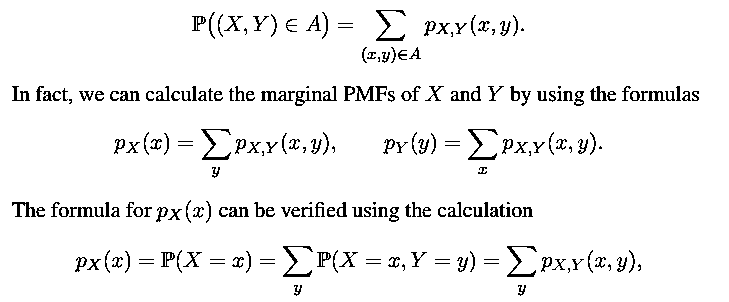Types Of Pmf
Joint, marginal, and conditional pmfs: In most applications, one typically deals with several random variables at once.
a. Marginal PMFs:
Consider two discrete random variables X and Y associated with the same experiment. The probability law of each one of them is described by the corresponding PMF, pX or pY , called a marginal PMF. However, the marginal PMFs do not provide any information on possible relations between these two random variables. For example, suppose that the PMF of X is symmetric around the origin. If we have either Y = X or Y = −X, the PMF of Y remains the same, and fails to capture the specifics of the dependence between X and Y .
b. Joint PMFs :
The statistical properties of two random variables X and Y are captured by a function x,y : R2 → [0, 1], defined by

The joint PMF of X and Y determines the probability of any event that can be specified in terms of the random variables X and Y . For example if A is the set of all pairs (x, y) that have a certain property, then

where the second equality follows by noting that the event {X = x} is the union of the countably many disjoint events {X = x, Y = y}, as y ranges over all the different values of Y . The formula for pY (y) is verified similarly.